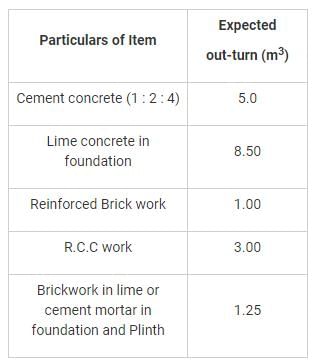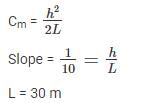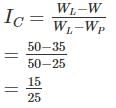Test: Civil Engineering- 3 - Civil Engineering (CE) MCQ
30 Questions MCQ Test Mock test series of SSC JE Civil Engineering 2025 - Test: Civil Engineering- 3
Which one of the following metamorphic rocks has more weathering resistance characteristics?
Rotary kiln used in manufacturing cement rotates at a speed of
| 1 Crore+ students have signed up on EduRev. Have you? Download the App |
When timber is burnt in the wood fire over a depth of about 15 mm, the process of treatment is known as______.
Which of the following compounds of Portland cement reacts immediately with the water and set early?
Which one of the following is used as a carrier in paint?
I.S Code specifies that the compressive strength of brick shall be determined by keeping the brick:
i) Place the specimen with flat faces horizontal
ii) Place the specimen with flat faces vertical
iii) After soaking in water for 12 hrs
What is the recommended moisture content of timber, which is used as a structural element for windows?
The opening left in flat roofs for lightening purposes is called:
The compressive strength of high duty bricks should be more than:
The hydraulicity of the hydraulic lime is mainly due to _____.
In plastering, the 1st coat is called ___________ and its thickness should be _______ mm.
A diesel generator has been installed in a building at a cost of Rs. 3500.00. The amount of annual instalment of the sinking fund required to be deposited to accumulate the whole amount at 5 % rate of interest will be?
Assume life of the generator as 20 years
The cost of brickwork required in a wall of 5 m long, 3.5 m high and 20 cm thick if the rate of brick work is 345 per cubic meter is?
When one engineering department takes up the work of other department, the Centage charges are taken to be:
Which among the following item is not included in technical sanction of the work?
The expected out turn of the cement concrete 1 : 2 : 4 for per mason per day will be:
Which among the following is not included in the Circulation area of the building?
Which among the following item is not included in tender notice for a particular project?
What is the degree of the curve (in degree) for a radius of 573 m using chain of 20 m length?
The length of a line measured with chain having 100 links was found to be 2000 links. If the chain was 0.5 links too short, find the true length of the line.
The hypotenuse allowance (in m) for 30 m long chain, if the slope is 1:10 is __________.
Radius of visible horizon from top of a 134 m light house will be:
How much refraction correction (in m) is required for a distance of 500 m?
A sample of soil has liquid limit 50%, plastic limit 25%, shrinkage limit 20% and moisture content 35%. The consistency index is _________
The ratio of the difference between the void ratio of the soil in its loosest state and its natural void ratio (e) to the difference between the void ratios in the loosest and fully dense state, is generally termed as _____.
The Relative density of compacted dense sand is approximately equal to ________.
The soil mass under consideration represents _______ when the degree of saturation is zero
|
1 videos|1 docs|64 tests
|
|
1 videos|1 docs|64 tests
|































